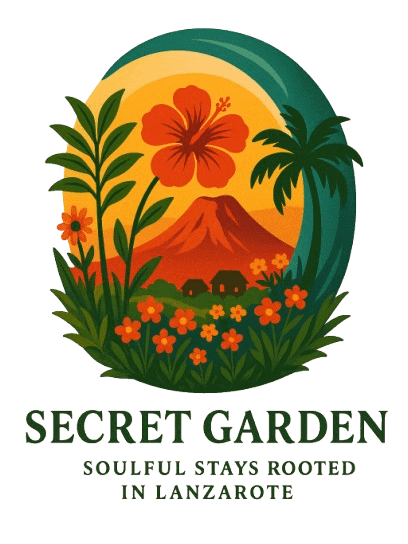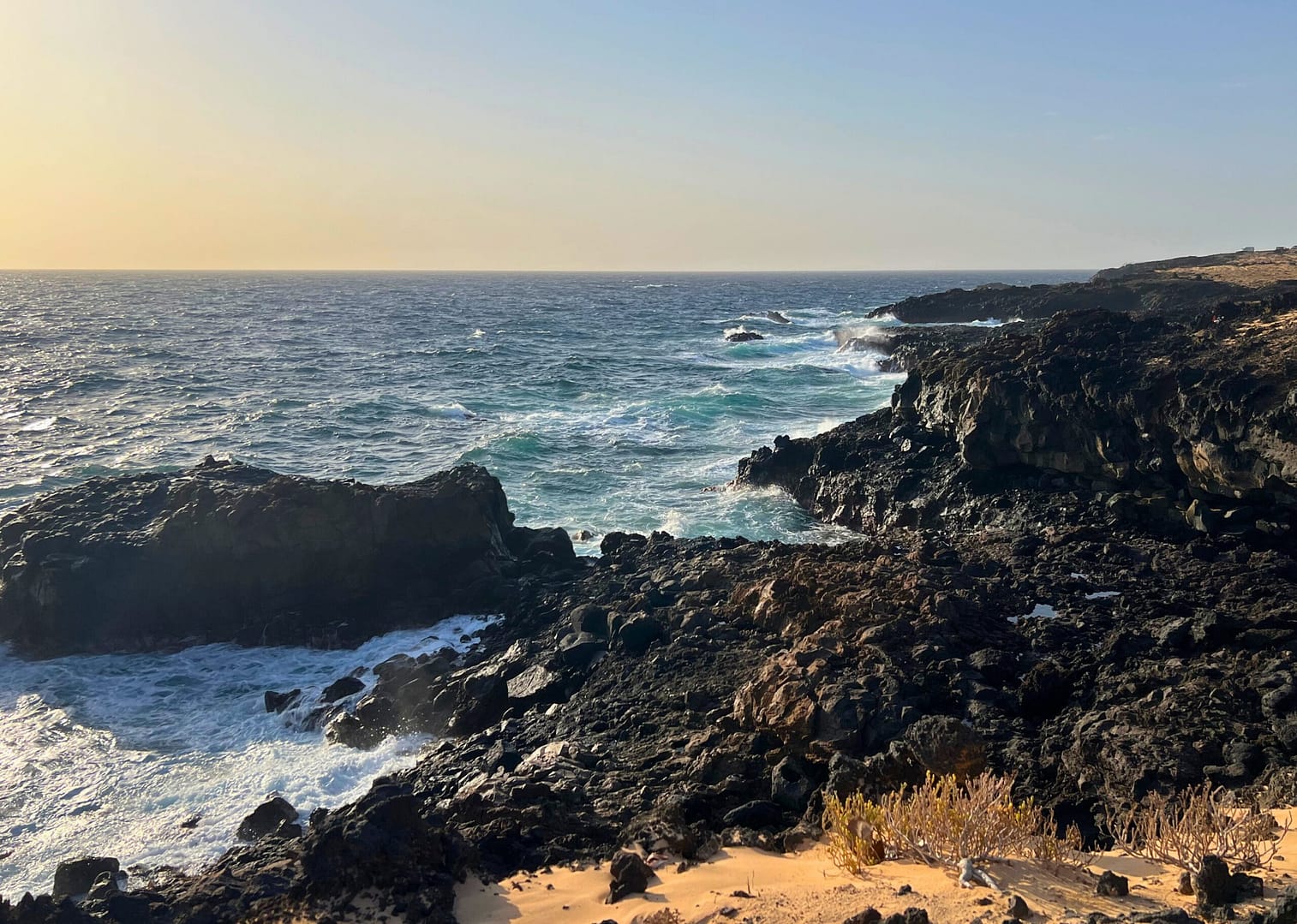Running the Wild Coast: Lanzarote trail from Charco del Palo to Los Cocoteros
Lanzarote is an island that surprises at every turn. Away from the resorts and beaches, it reveals a wilder, more elemental side: volcanic cliffs that plunge into the Atlantic, dirt trails etched by centuries of wind, and fishing villages where time seems to stand still. One of the best ways to experience this raw beauty is on foot, and the coastal Lanzarote trail from Charco del Palo to Los Cocoteros is a shining example. This trial can be strolled, hiked, or run – it is up to you.
Covering just under seven kilometers, this route isn’t long, but it packs in atmosphere. Rugged volcanic terrain, uninterrupted sea views, and the feeling of being completely exposed to nature make it unforgettable.
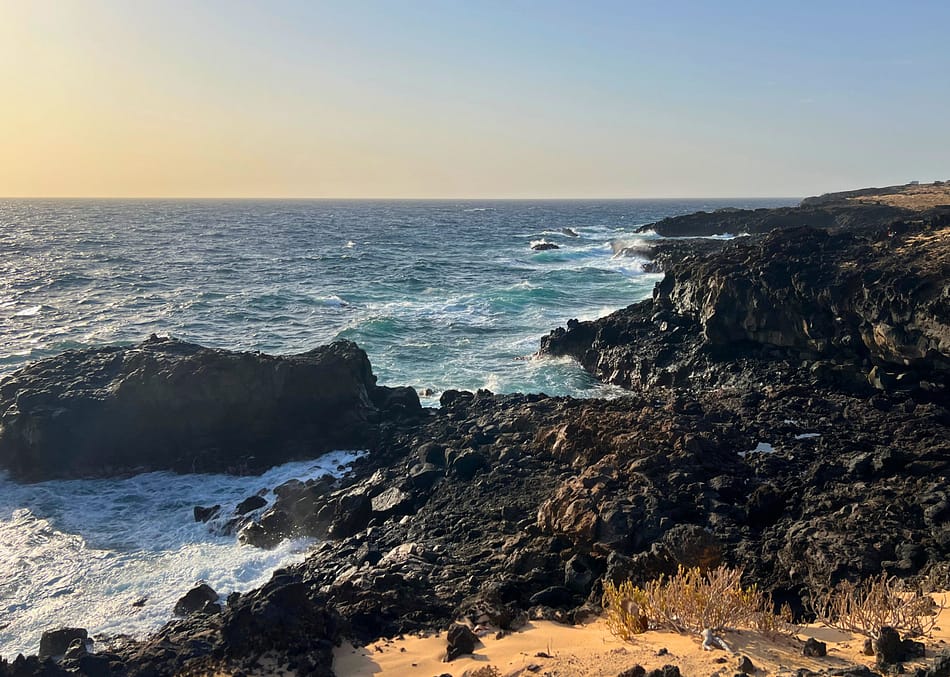
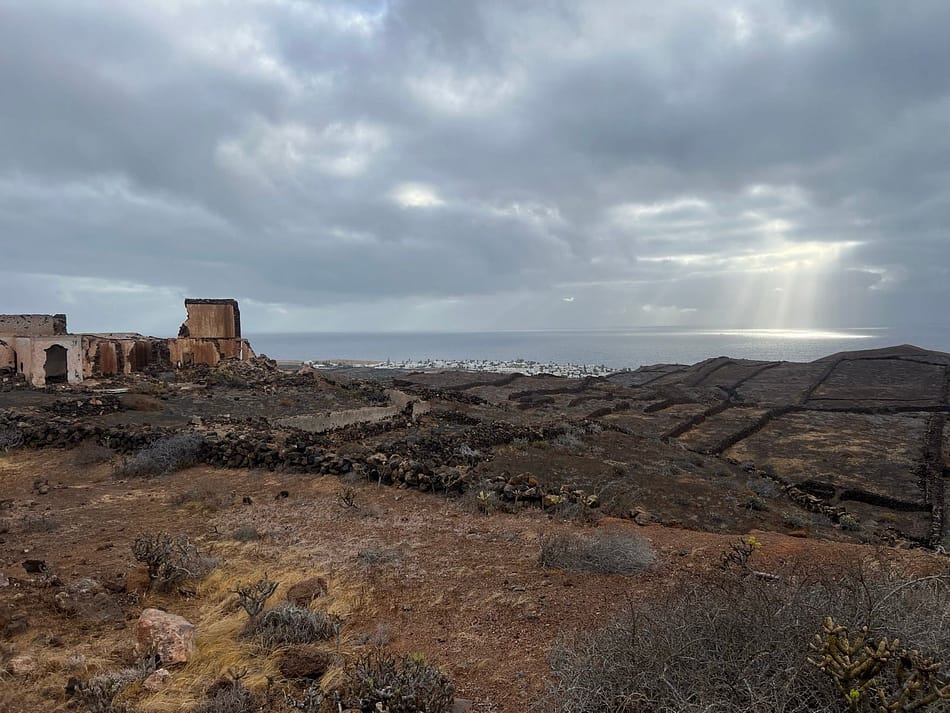
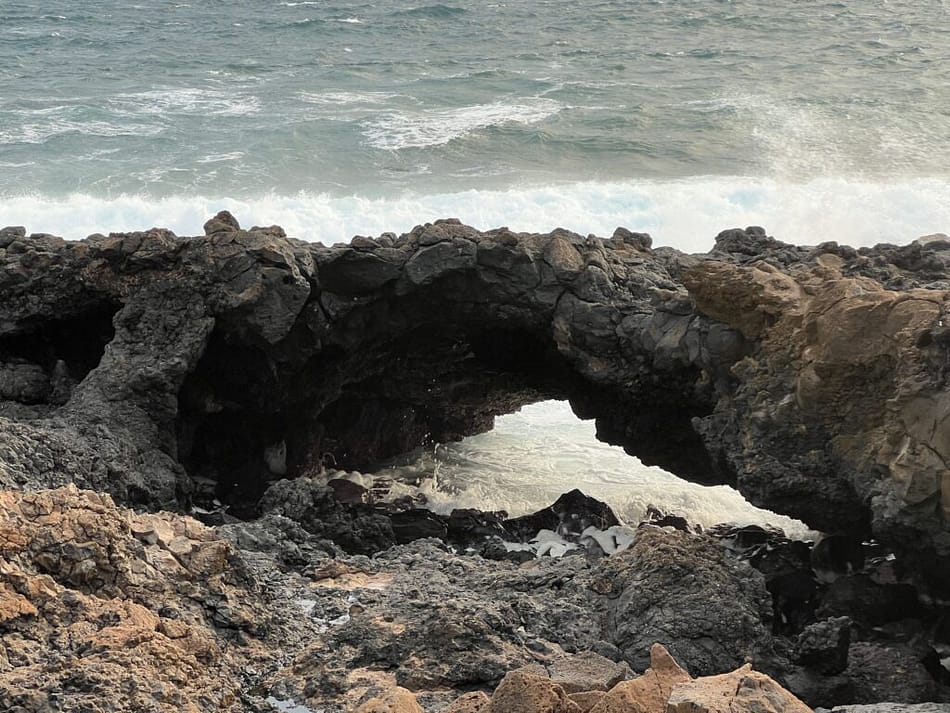
Starting Point: Charco del Palo
This Lanzarote trail begins in Charco del Palo, a small naturist village in the municipality of Haría. Unlike the island’s tourist hubs, this settlement is quiet, unconventional, and defiantly authentic. It’s famous for its open attitude toward naturism, but what makes it a remarkable start point for runners is its dramatic coastline.
Here, volcanic rock dominates the landscape. Instead of sandy beaches, you’ll find natural tidal pools carved into the stone. The Atlantic crashes relentlessly against jagged cliffs, creating a soundtrack that will follow you as you run. Standing at the trailhead, the view south is endless: dirt paths threading along the coast, the horizon blending sea and sky.
This is where your run begins — on the edge of the world.
Lanzarote Trail – from inland to coast
From Charco del Palo, the trail immediately feels wild. The surface is mostly dirt and volcanic gravel, uneven in places but firm enough for running. There are no manicured promenades or shaded avenues here; this is Lanzarote’s untamed side.
The path circles inland up the hilly route and brings you back along a path that clings to the coast, sometimes just a few meters from the crashing waves. Black volcanic cliffs drop dramatically into the sea, and the contrast between the dark rock and the deep blue Atlantic is mesmerizing. To your right, the terrain stretches inland into barren volcanic fields, dotted with hardy plants that cling to life in this dry environment.
Running here is a study in contrasts: the solid crunch of trail underfoot against the fluid motion of the ocean, the silence of the land broken only by the roar of waves and the occasional seabird.
Terrain and Elevation
Though the route is coastal, it isn’t entirely flat. Over the 6.9 km to and back from Los Cocoteros, you’ll gain about 110 meters of elevation. These are not steep climbs, but rather gentle rises and dips that roll along the coast. They add just enough variation to keep the run interesting without being overly demanding.
Surface-wise, it’s 90% dirt trail and 10% paved track as you approach villages. The dirt is coarse volcanic grit — stable but uneven, with occasional loose stones. Trail or hybrid running shoes are ideal, but road shoes with decent cushioning will suffice.
The Feeling of Remoteness
One of the most striking aspects of this Lanzarote trail is the sense of remoteness. From the moment you leave Charco del Palo, you’re immersed in open space. The land is barren, with little to no shade, and the sky feels enormous above you. The sea is your constant companion — beautiful, powerful, and sometimes intimidating when the waves crash violently against the rocks.
This exposure makes the run feel elemental. You’re moving between earth, sea, and sky with no buffer. It’s exhilarating, but also a reminder of how small we are in the face of nature.
Approaching Los Cocoteros
After roughly four kilometers, the trail brings you down to the coast and toward Los Cocoteros, a quiet fishing village with a very different vibe from Charco del Palo. Where the start felt raw and wild, the finish feels human-scaled and gentle.
Los Cocoteros is known for its salt flats, which shimmer in the sunlight and hint at the island’s traditional industries. The village is peaceful, with whitewashed houses and a slower rhythm of life. Arriving here after a coastal run feels like stepping back into civilization, though in a modest, low-key way.
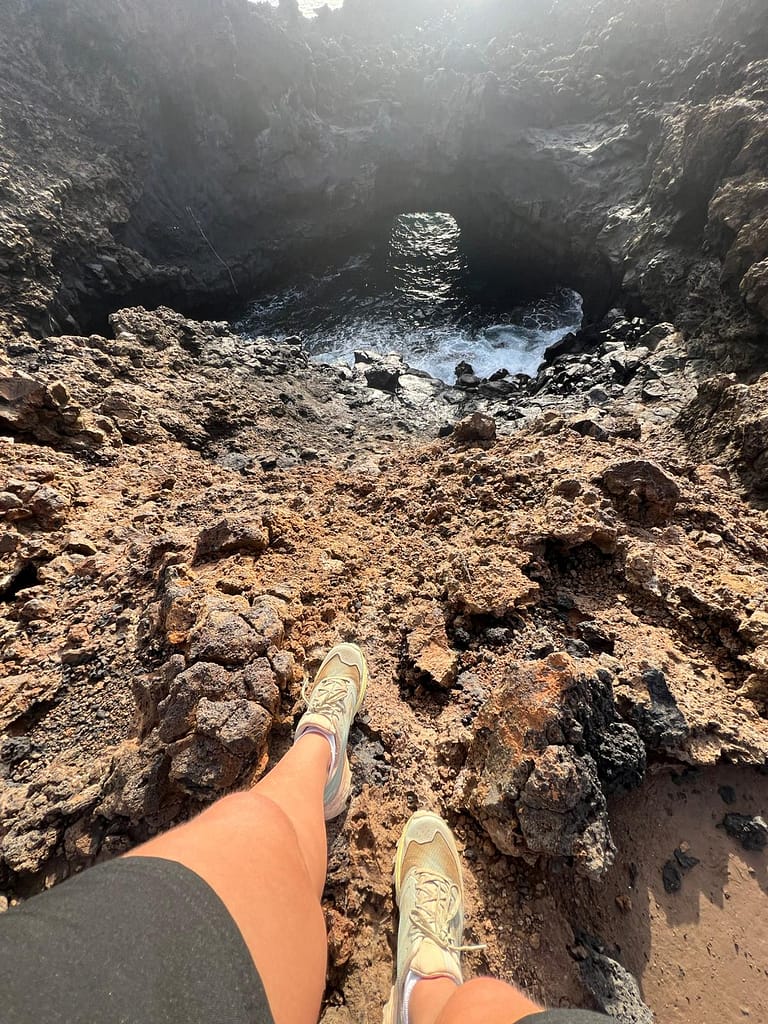
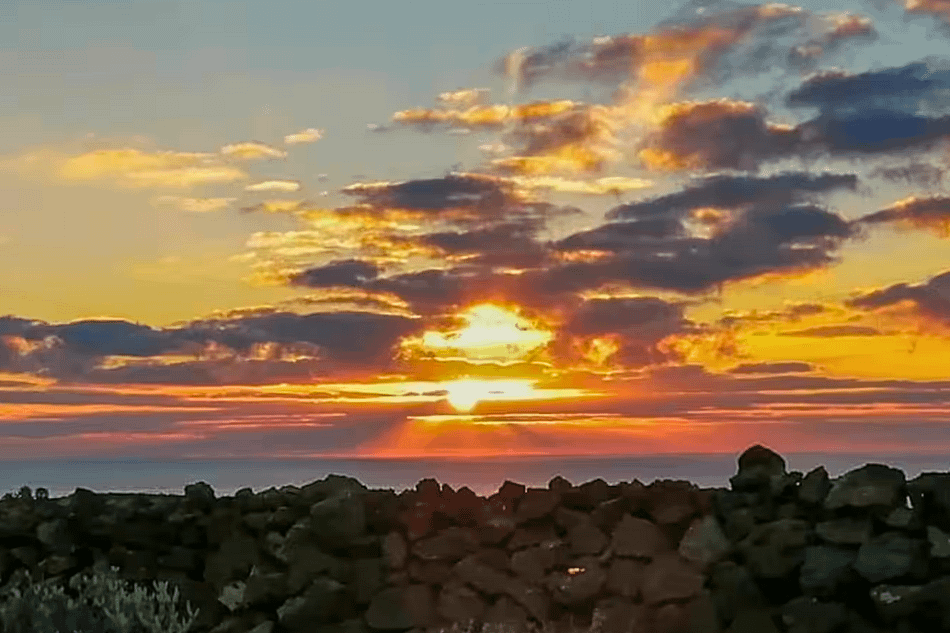
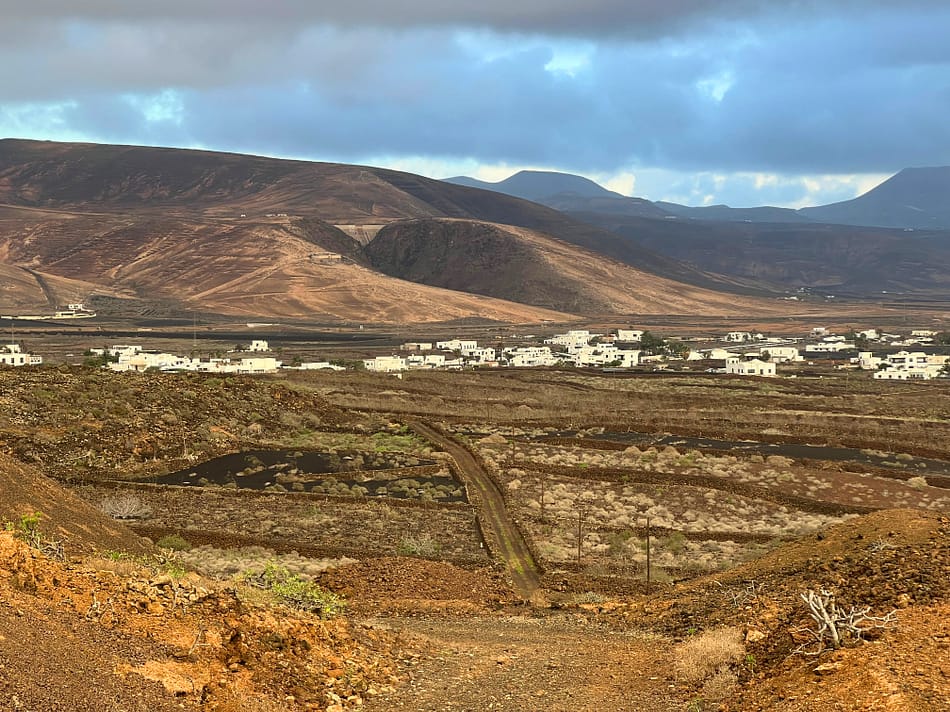
Training Value
From a training perspective, the Charco del Palo to Los Cocoteros route is highly versatile. At under 7 km, it’s short enough for beginners or those seeking a steady recovery run. The dirt trail is kinder to joints than asphalt, and the rolling profile provides natural variation without being punishing.
For more experienced runners, this is an excellent place for tempo sessions. The openness of the trail allows you to settle into a rhythm, though the wind may challenge your consistency. In fact, the wind is a defining feature here — often strong, it adds resistance and makes the workout more demanding. Consider it free strength training provided by the Atlantic.
Scenic and Cultural Value
What sets this route apart is how deeply it connects you to Lanzarote’s identity. Charco del Palo represents the island’s alternative, unconventional side — a community that embraces freedom and simplicity. The volcanic coastline embodies Lanzarote’s natural power, shaped by fire and sea. And Los Cocoteros reflects tradition, with salt flats and fishing heritage that speak of resilience.
Running this path is more than exercise. It’s a moving meditation on the island’s past and present, its landscapes and its people. You don’t just observe Lanzarote; you inhabit it with every stride.


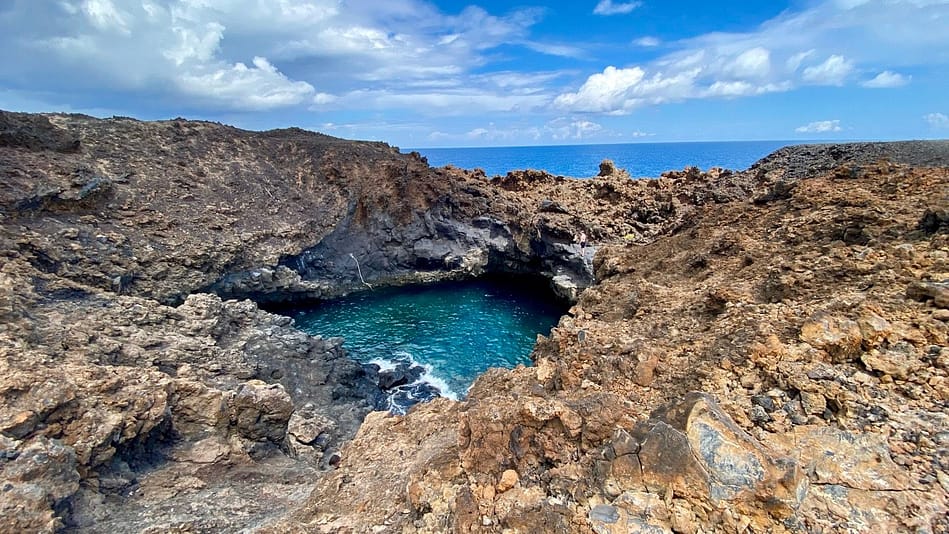
Practical Tips
- Best time to run: Early morning or late afternoon, when temperatures are lower and light is softer.
- Water & supplies: Carry your own — there are no fountains along the trail.
- Footwear: Hybrid or trail shoes are ideal, though not essential.
- Weather: The path is exposed. Expect sun, wind, and little shelter.
- Navigation: The route circles inland and back on the coast, but always worth checking a map before setting out.
Final Thoughts
The Charco del Palo to Los Cocoteros route is Lanzarote distilled: wild, raw, and unforgettable. It may not boast long climbs or technical descents, but it offers something rarer — the chance to feel the island’s elemental power beneath your feet.
You start in a naturist village carved into volcanic cliffs, follow a lonely dirt trail along the pounding Atlantic, and end in a fishing village with centuries of history. In under seven kilometers, you traverse not just distance, but culture, geology, and atmosphere.
For travelers, it’s a perfect way to step off the beaten track. For runners, it’s a short, sharp session that feeds the soul as much as the body. And for anyone who loves Lanzarote, it’s another reminder that this island is best experienced not from behind a car window, but with the wind in your face and the sea at your side.
So lace up, take a deep breath, and set out from Charco del Palo. The wild coast is waiting, and every stride brings you closer to the heart of Lanzarote.
If this rugged stretch of coastline has captured your imagination, why not stay nearby and make it part of your daily rhythm? We rent a selection of charming, rustic, and authentic lodgings in the area — places that reflect the same spirit of Lanzarote as the trail itself. Each stay is designed with comfort and character in mind, so you can relax after your adventures. Take a look at our listings page and find the perfect base for your island escape.
FROM THE BLOG
Latest News
-
Unlock Private Naturist Retreat minutes from the Famous Naturist Village
Lire la suite : Unlock Private Naturist Retreat minutes from the Famous Naturist VillageCharco del Palo, an official Naturist Village in Lanzarote Nestled just outside the charming naturist village of Charco del Palo, Secret Garden Lanzarote offers a unique blend of privacy, comfort, and natural beauty for all kinds of holidaymakers.…
-
How to get to the edge of the world – Lanzarote trail
Lire la suite : How to get to the edge of the world – Lanzarote trailRunning the Wild Coast: Lanzarote trail from Charco del Palo to Los Cocoteros Lanzarote is an island that surprises at every turn. Away from the resorts and beaches, it reveals a wilder, more elemental side: volcanic cliffs that…
-
What made me fall in Love with Pitaya: It wasn’t the fruit.
Lire la suite : What made me fall in Love with Pitaya: It wasn’t the fruit.Understanding Pitaya Beyond the Fruit When most people think of dragon fruit, or pitaya, their minds jump straight to the vibrant pink fruit with its sweet, refreshing flavor. But my journey with pitaya at Secret Garden Lanzarote taught…
